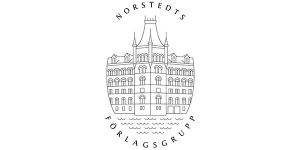
Effect of hydration on thermodynamic, rheological and structural properties of mucin

| Författare | |
|---|---|
| Förlag | Malmö Högskola |
| Genre | Medicin |
| Format | Häftad |
| Språk | Engelska |
| Antal sidor | 176 |
| Vikt | 379 gr |
| Utgiven | 2018-02-22 |
| SAB | Vbba |
| ISBN | 9789171045133 |
English abstract
Mucus, an adherent hydrated layer covering the epithelium, is found in all internal tracts of the body and plays an important role in animal and human life. One of the essential functions of mucus is protection of tissues against dehydration. A major component of mucus, forming the macromolecular matrix and also being responsible for its viscoelastic properties, is the glycoprotein mucin. Mucin is a complex molecule owing to the high molar mass, its polydispersity and high degree of glycosylation. This thesis is aimed to investigate how thermodynamic, structural and rheological properties of mucin are affected by hydration. The effect of hydration on thermodynamic properties of pig gastric mucin (PGM) and bovine submaxillary mucin (BSM) has been studied using sorption calorimetry and differential scanning calorimetry (DSC). The analysis of sorption isotherms shows higher water sorption capacity of PGM compared to BSM at relative humidity (RH) levels lower than about 78%. The value of the hydration enthalpy at zero water content at 25ºC for both biopolymers is close to -20 kJ/ mol. RH levels at which glass transition of both mucins occurs are shown to be between 60 and 70%. The RH at which glass transition occurs is weakly dependent on the temperature and mucin type. The phase diagram of PGM demonstrates two different glass transition regions: dependent and independent on hydration levels, respectively. In particular at mucin concentrations from 0 to 67 wt%, the glass transition occurs at a constant temperature of about –15ºC. At higher concentrations of mucin, the glass transition temperature (Tg) increases with increasing mucin concentrations. It is also demonstrated that the QCM-D technique can be used to obtain the water sorption isotherms of mucin films in particular and in general to monitor glass transitions in biopolymers. Hydration-induced changes of rheological properties of mucin films are investigated using a model-free approach. The ratio of G’/G’’ is evaluated as a function of relative humidity. Observed transitions from solid-like behaviour to liquid-like behaviour in mucin system occur in the same humidity range as that found in sorption calorimetric experiments. The structural properties of mucin have been studied using atomic force microscopy (AFM) and small-angle X-ray scattering (SAXS). AFM indicates the presence of dumbbell as well as fiber-like structures in PGM samples. In the case of BSM samples, only fiber-like structures are observed. SAXS studies show three ranges of scattering vector q corresponding to different fractal dimensions in dilute PGM and BSM solutions. Dehydration-induced structural changes in PGM are demonstrated by a distinct appearance of peaks on scattering curves starting from 20 wt% of mucin. Structural changes at about 80 wt% obtained in SAXS at 25°C, correspond to mucin glass transition, and are in agreement with sorption calorimetry and DSC studies. Temperature-induced phase behaviour changes occur around 60-70°C at intermediate levels of hydration. A comparison between water sorption isotherms of BSM/chitosan multilayers and those of individual biopolymers shows that the water sorption capacity of BSM/chitosan multilayers is similar compared to that of individual biopolymers, although some differences exist. In particular, at low RH levels the water sorption capacity of multilayers is slightly higher compared to each biopolymer, however at high RH the multilayer films are less hydrated than individual biopolymers.























